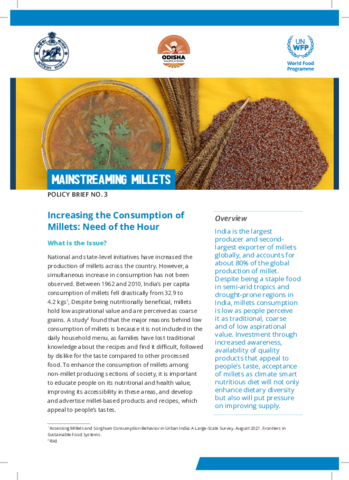
Millets are traditionally and culturally accepted staple food that require very low input costs. Are easily grown in water stress areas and period of maturation is comparatively lower. They are highly nutritious and provide food security, making them an ideal crop of the 21st Century, especially in view of changing climate increasing population stress. Focus on consumption of millets by the Government and other stakeholder will put pressure on supply and production of quality millets. Increased consumption of millets in urban and rural markets to shift the perception of millets from ‘poor man’s food’ to ‘a healthy alternative’ and as part of dietary diversification will help improved access to sustainable food and nutrition security. To achieve this, it is recommended to use large scale awareness campaign to expand the market for millets. This includes appropriate awareness campaigns targeting different segments, especially through social and digital media channels, as these are the major sources of information on health and food among youngsters. It would also be important to promote recipes that are palatable and healthy, products that are modern and convenient, into markets that are more easily accessible.
